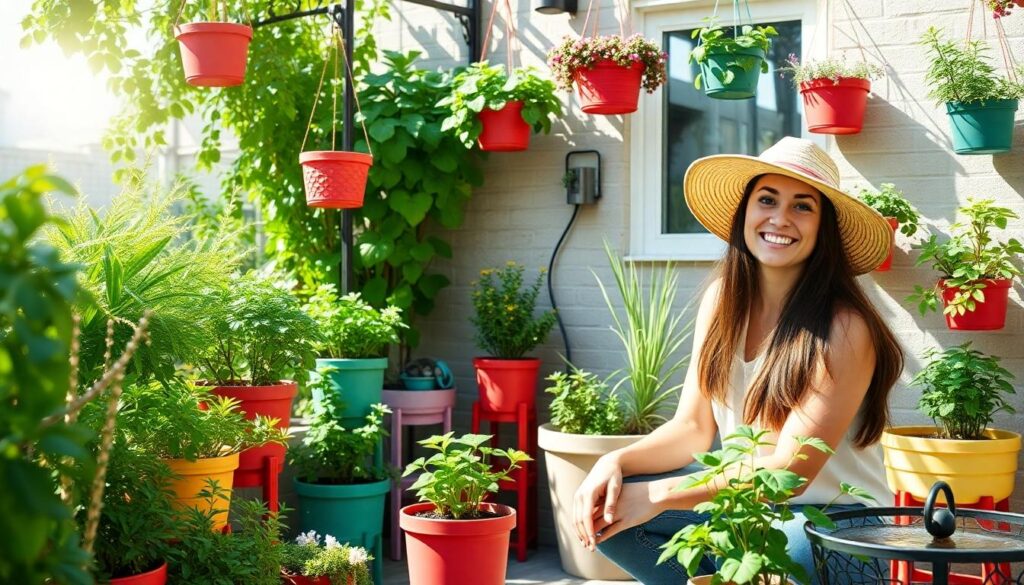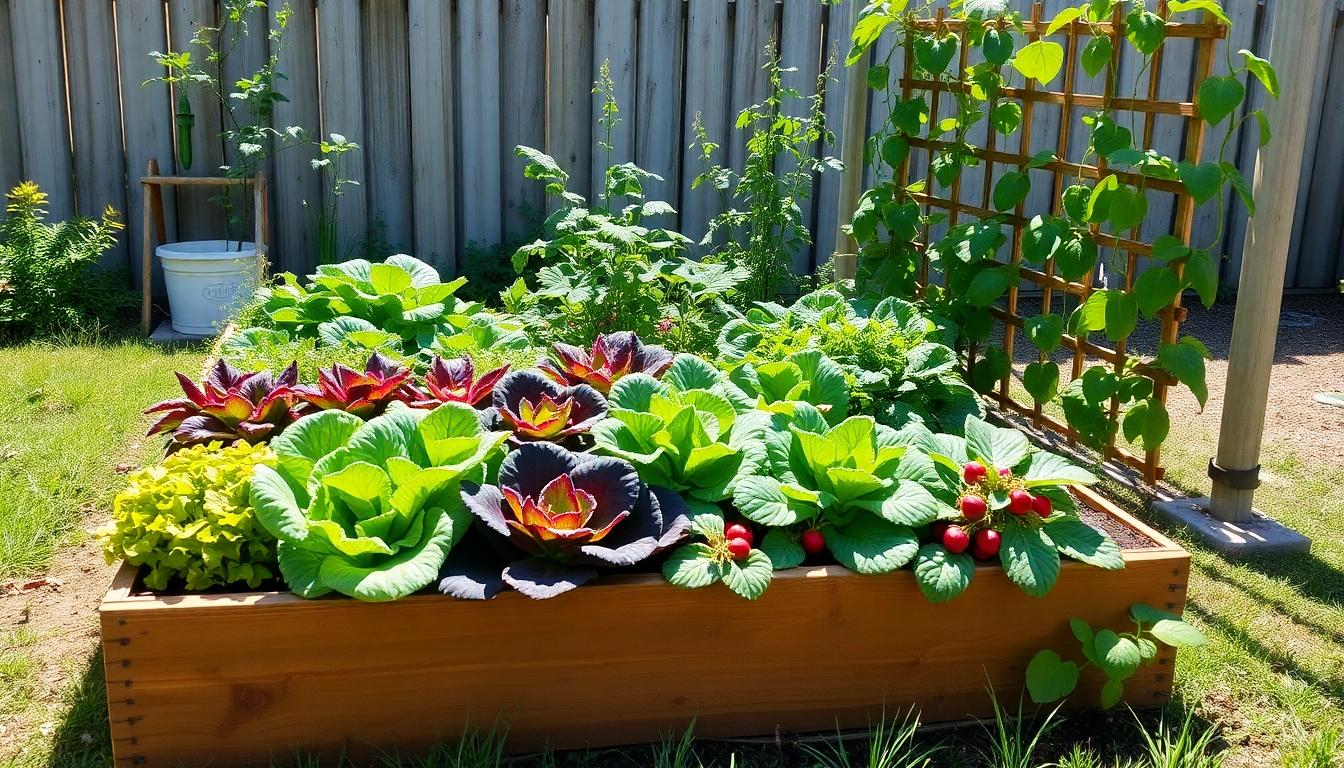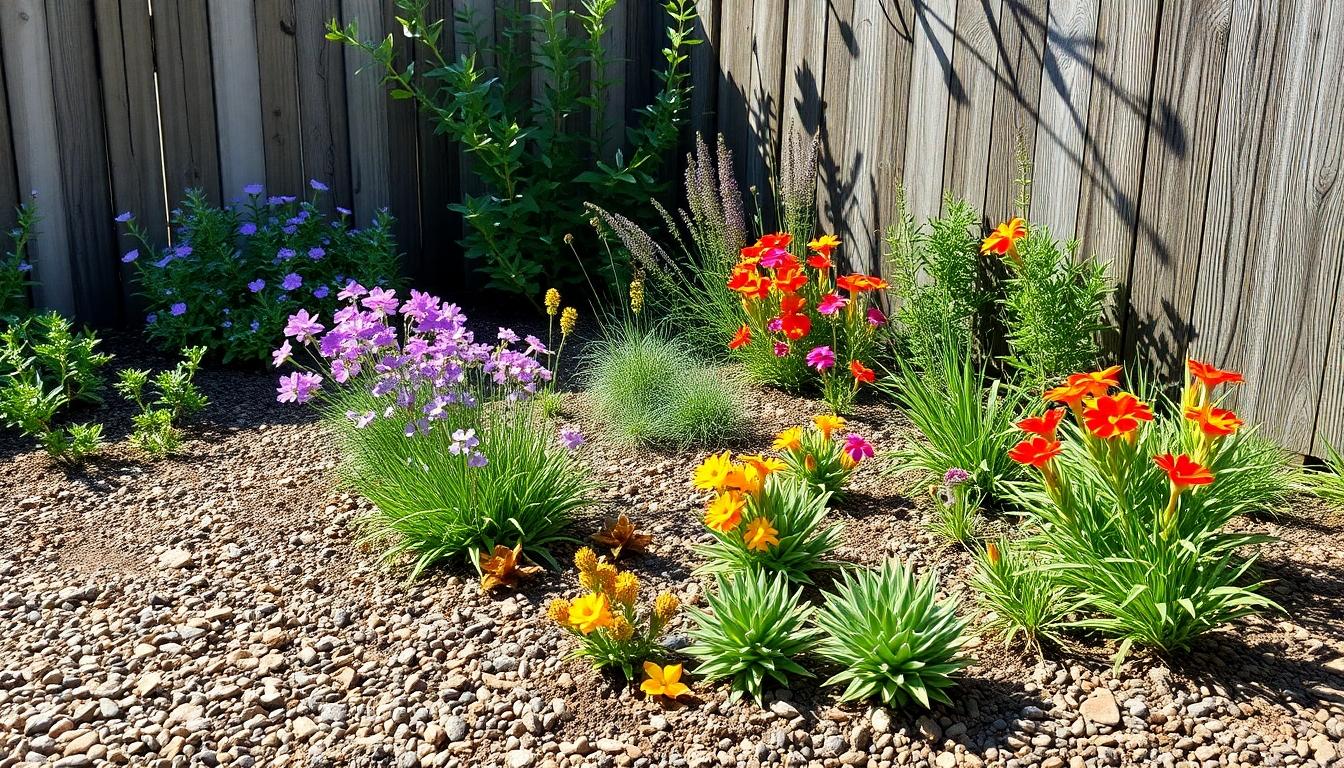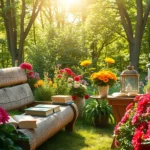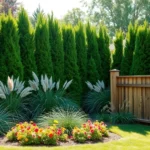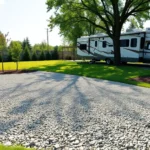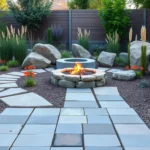Dreaming of a lush outdoor oasis but limited by space? We’ve got you covered! Small gardens don’t need to compromise on style or function – they just require a bit more creativity and strategic planning to reach their full potential.
We’ll show you how to transform your compact outdoor area into a stunning retreat that maximizes every inch. From vertical gardening answers to multi-functional furniture and clever container arrangements, these small garden ideas will help you create a space that feels both larger and more luxurious than its dimensions suggest. Get ready to discover how the right design choices can turn your tiny plot into the garden you’ve always wanted.
10 Space-Saving Container Gardens for Tiny Yards
- Vertical Herb Planters deliver maximum flavor in minimal space. These wall-mounted containers allow you to grow culinary herbs like basil, mint, and thyme without sacrificing precious floor space. Many vertical herb gardens come with built-in watering systems that make maintenance incredibly simple.
- Tiered Plant Stands create multiple growing levels in a single footprint. By stacking plants upward rather than outward, you’ll instantly multiply your planting area while maintaining a tiny footprint. These stands work beautifully for displaying collections of small potted flowers or succulents.
- Hanging Basket Gardens use overhead space that’s often overlooked. Suspending plants from porch ceilings, fence posts, or shepherd’s hooks allows you to grow trailing varieties like petunias, ivy, and strawberries without using valuable ground space. A mix of basket heights creates visual interest and depth.
- Window Box Displays transform ordinary sills into gorgeous garden spaces. These narrow containers fit perfectly on windowsills, railings, or fence tops, bringing color right up to your living space. Window boxes excel with shallow-rooted plants like marigolds, pansies, and lettuce varieties.
- Upcycled Container Collections turn everyday items into charming planters. Old teapots, boots, colanders, and wooden crates make unique containers that add personality while keeping your garden budget-friendly. Drilling drainage holes ensures proper water flow for healthy plants.
- Railing Planters maximize boundary spaces that often go unused. These specially designed containers hook over deck or balcony railings, creating instant gardens without floor space requirements. Most can be installed without tools or permanent modifications, making them perfect for rental properties.
- Stackable Pots create towers of greenery in tiny corners. These modular systems allow multiple plants to share a single base while growing at different heights and angles. Strawberry towers and vertical succulent planters fit this category perfectly, offering impressive growing capacity in just one square foot.
- Pocket Wall Gardens transform vertical surfaces into living tapestries. Fabric pocket systems hang on walls or fences, holding multiple plants in a grid-like arrangement. These work wonderfully for small flowering plants, lettuce varieties, and compact herbs.
- Rolling Garden Carts provide flexibility in tight spaces. Wheeled containers let you move your garden to follow sunlight or rearrange your layout instantly. These mobile gardens prove especially useful for plants that need protection during weather extremes.
- Multi-tiered Fountain Planters combine water features with growing space. These decorative containers create a focal point while accommodating several plants in a small footprint. The gentle sound of water adds a relaxing element to your tiny garden while watering circulates naturally through the system.
How to Create Vertical Gardens in Limited Spaces
Wall-Mounted Planter Systems
Wall-mounted planter systems offer excellent answers for gardeners with minimal ground space. Modular systems like pocket planters transform vacant walls into thriving gardens perfect for growing herbs, lettuce, or strawberries. Repurposed items such as hanging shoe organizers provide an affordable alternative while ensuring your plants receive adequate drainage and sunlight exposure. Mounted wooden pallets create customizable setups that work wonderfully for shallow-rooted plants including succulents and leafy greens. PVC pipe grids represent another low-cost option that can be configured to fit spaces of any size, making them ideal for apartment dwellers or those with tiny patios. When installing these systems, we recommend securing them properly to prevent wind damage and using lightweight potting mixes enhanced with compost for better moisture retention and nutrient density.
Trellis and Climbing Plant Combinations
Trellises maximize growing space by encouraging plants to grow upward rather than outward. A-frame trellises provide sturdy support for vining vegetables like cucumbers, pole beans, and peas that would otherwise sprawl across valuable garden space. Bamboo grids offer a natural aesthetic while effectively supporting climbing plants in even the smallest gardens. Lattice panels work beautifully for ornamental gardens when paired with flowering climbers such as morning glories or clematis, creating stunning vertical displays. These vertical structures deliver additional benefits beyond space-saving, including improved air circulation and light penetration that naturally minimize pest issues. Regular pruning of climbing plants helps direct growth and significantly improves yields while maintaining an attractive appearance. For best results, ensure your trellis has sufficient load-bearing capacity to support the full weight of mature plants, especially for heavier producers like squash varieties.
Maximizing Small Garden Productivity with Square Foot Gardening
Square foot gardening revolutionizes how we approach small space cultivation by dividing growing areas into manageable square sections. This method delivers impressive efficiency, requiring 20% less space than traditional row gardening, 10% less water, and amazingly, only 2% of the work while improving yields through better soil quality in raised beds.
Planning Your Square Foot Grid
Creating an effective square foot grid starts with dividing your garden bed into equal square sections, typically using a 4′ x 4′ grid that provides 16 square feet of growing space. Your grid design should accommodate exact planting densities based on each crop’s needs, with common configurations allowing for 1, 2, 4, 9, or 16 plants per square foot. Plants that need more space like tomatoes might occupy an entire square, while smaller crops like radishes can be planted 16 per square. Implementing a full crop rotation plan ensures ongoing soil health and prevents nutrient depletion over multiple growing seasons. We recommend incorporating a variety of vegetables, herbs, and flowering plants within your grid to maintain biodiversity and visual interest throughout the growing season.
Best Vegetables for Square Foot Gardens
Leafy greens thrive exceptionally well in square foot gardens, with lettuce, kale, spinach, and arugula allowing for dense planting of 9 plants per square foot. Root vegetables such as radishes and carrots make efficient use of space, fitting 9-16 plants per square depending on the variety and desired size at harvest. Climbing plants transform vertical space into productive growing areas, with cucumbers and beans performing wonderfully when trained up trellises positioned along the northern edge of your garden. Larger vegetables including tomatoes, peppers, and zucchini work best when allocated more generous space, typically planted individually in their own squares due to their spreading growth habits. The versatility of this method allows gardeners to mix quick-growing crops with longer-season vegetables, ensuring continuous harvests from even the smallest garden spaces.
Transforming Balconies into Lush Mini Gardens
1. Maximize Space
Vertical gardening offers the perfect solution for balcony gardeners struggling with limited floor space. We recommend attaching pots, shelves, or trellises to walls and hanging plants from the ceiling to create a three-dimensional garden experience. Balcony railings present excellent opportunities for expanding your growing area—cover them with chicken wire to support climbing plants or install specially designed railing planters that hook securely over the edge. These space-saving techniques allow you to grow significantly more plants than traditional floor-based containers alone.
2. Select Appropriate Plants
Choosing the right plants dramatically impacts your balcony garden’s success. We suggest growing herbs, vegetables, and small trees like dwarf citrus or olive varieties that thrive in container environments without outgrowing their space. For balconies on higher floors that receive intense sunlight, durable sun-loving plants provide the best chance of success. Consider drought-tolerant varieties that can handle occasional missed waterings and withstand wind exposure commonly experienced at elevation.
3. Design Considerations
Furniture placement requires careful planning to create a balanced, functional balcony garden. We find that compact options like loveseats or bistro sets provide comfortable seating while leaving ample room for your favorite plants. Privacy concerns can be elegantly addressed through green answers—trellises or slatted walls filled with climbing vines create natural screens that enhance your garden aesthetic while blocking unwanted views from neighboring properties.
4. Container Choices
Lightweight containers deserve serious consideration for balcony gardens to prevent structural issues. We advise selecting resin or fiberglass planters that provide the look of heavier materials without adding excessive weight to your balcony’s load capacity. A few unique, stylish containers can serve as focal points in your design, adding visual interest without overwhelming the limited space. Strategic container placement along walls and railings maximizes floor space while creating a lush, abundant atmosphere in even the smallest balcony garden.
5 Water-Wise Garden Solutions for Small Spaces
Choose Water-Efficient Plants
Native Mediterranean climate plants offer exceptional drought tolerance for small garden spaces. Plants from California, South Africa, and southern Europe naturally thrive in environments with warm, dry summers and cool, moist winters. These regional varieties have evolved to require minimal watering once established, making them perfect choices for water-conscious gardeners. We recommend selecting these native options to create a sustainable garden that remains vibrant while conserving precious water resources.
Gravel Mulch and Drip Irrigation
Applying gravel mulch serves multiple purposes in water-wise gardens by effectively retaining soil moisture and preventing weed growth. Drip irrigation systems complement this approach by delivering water directly to plant roots where it’s needed most. This targeted watering method dramatically reduces waste through evaporation and runoff compared to traditional sprinklers. We’ve found these systems particularly valuable in small spaces where every drop counts and precise water management makes a important difference in plant health.
Eliminate Lawns
Traditional lawns demand substantially more water than alternative industry plants, making them impractical for water-conscious small gardens. Replacing grass areas with drought-tolerant ground covers creates an immediately more sustainable space. These alternatives still provide the visual appeal of continuous green coverage while requiring just a fraction of the water. We suggest considering options like creeping thyme or sedum varieties that offer interesting textures and occasional blooms without the excessive water requirements of conventional turf.
Weather-Sensitive Irrigation Controllers
Smart irrigation controllers adjust watering schedules automatically based on current and forecasted weather conditions. These systems can reduce water usage by up to 30% by preventing unnecessary watering before or after rainfall. The technology works particularly well in small gardens where precise control over limited resources is essential. We recommend these controllers as a worthwhile investment that quickly pays for itself through water savings while ensuring plants receive optimal moisture levels.
Compact Garden Designs
Purpose-built garden design templates for small spaces maximize both water efficiency and visual impact. Butterfly and songbird garden layouts, for example, incorporate native plants that attract beneficial wildlife while requiring minimal irrigation. These specialized designs strategically position plants to create microclimates where taller specimens provide partial shade for more delicate varieties. We encourage gardeners to explore these compact designs that transform limited areas into biodiversity hotspots while maintaining responsible water usage throughout the growing season.
Creating Multi-Functional Garden Furniture for Compact Areas
When space is at a premium, furniture that serves multiple purposes becomes essential for small garden owners. Multi-functional elements allow you to maximize every inch of your outdoor area without sacrificing style or functionality.
Storage Benches with Planting Space
Storage benches with integrated planters offer an ingenious solution for compact gardens by combining two essential functions in one piece of furniture. These versatile units provide comfortable seating while incorporating built-in spaces for growing flowers, herbs, or small vegetables. The dual-purpose design eliminates the need for separate seating and planting areas, freeing up valuable space in your garden. Many models feature waterproof storage compartments beneath the seating area, perfect for stowing garden tools, cushions, or outdoor accessories. The raised planting sections also deliver better drainage and accessibility, making gardening tasks more manageable without the need to bend down to ground level.
Foldable and Convertible Garden Elements
Foldable and convertible garden furniture provides exceptional flexibility for small outdoor spaces that need to serve multiple purposes. Tables that expand when entertaining guests but fold down when not in use help maximize your available area while maintaining functionality. Convertible benches that transform into tables or shelving units allow your garden to adapt to different needs throughout the day or season. Collapsible elements can be easily stored away during inclement weather or when you need more open space for activities. The adaptability of these pieces enables your garden to function as an outdoor dining area, relaxation space, or even a workspace without permanent dedication to any single purpose. Using these versatile furniture options creates a ever-changing garden environment that changes according to your immediate needs rather than being limited by fixed installations.
Small Garden Lighting Ideas to Enhance Evening Ambiance
Layer Lighting for Depth and Function
Layering different types of lighting creates dimension in compact outdoor spaces. We recommend combining warm ambient lights with cooler task lights to achieve perfect balance throughout your garden. String lights suspended above seating areas provide a soft, inviting glow that encourages evening relaxation. Adjustable spotlights serve as functional task lighting, allowing you to highlight special features like ornamental grasses or water elements. This multi-level approach transforms your small garden from a daytime retreat into an enchanting nighttime haven.
Strategic Placement Techniques
Backlit trees create dramatic silhouettes that add depth to limited spaces. Position lights behind potted shrubs or small trees to emphasize their unique foliage texture and create the illusion of a larger area. Uplighting installed at ground level draws the eye upward, making excellent use of vertical space when directed at textured walls or architectural plants. Low-voltage LED path lights guide movement through your garden without overwhelming the intimate setting. These placement strategies work together to define different zones within your compact garden while maintaining a cohesive lighting scheme.
Highlight Garden Features
Water features become magical focal points when properly illuminated at night. Submersible lights placed within fountains or small ponds enhance reflective surfaces, creating dancing patterns that add movement to your garden. Container gardens gain new dimension with battery-operated string lights wrapped around the plants, offering a budget-friendly way to add festive touches to potted arrangements. These targeted lighting approaches draw attention to your garden’s most impressive elements while distracting from space limitations.
Incorporate Firelight Elements
Portable fire pits create warm, inviting gathering spaces in even the smallest gardens. Tabletop flame bowls provide similar ambiance when space is extremely limited, serving as both light source and conversation piece. Fire elements add a primal, flickering light quality that complements electric lighting while encouraging social interaction. The warmth and movement of flames create an intimate atmosphere that makes compact spaces feel cozy rather than cramped.
Smart Lighting Answers
Solar-powered fixtures eliminate the need for complex wiring in tight spaces. Motion-activated lights conserve energy while providing security and functionality exactly when needed. Smart lighting systems allow you to control brightness and timing from your phone, creating different moods for various occasions without physically rearranging your compact garden. These intelligent options maximize both energy efficiency and versatility in confined outdoor areas while minimizing maintenance requirements.
Incorporating Miniature Water Features in Tight Spaces
Mini Water Feature Ideas for Small Gardens
Water features don’t require sprawling spaces to make an impact. Mini fountains using planter-sized bowls or slim waterfalls create movement and sparkle while fitting perfectly in compact areas. These affordable options take up minimal space yet deliver maximum visual appeal to your garden environment.
Repurposed items offer creative possibilities for unique water features in tight spaces. Old terracotta pots, concrete basins, and even plastic tubs can transform into charming water elements with minimal effort. Stacking multiple pots creates interesting cascading effects, while vintage sinks repurposed as decorative basins add character to tiny garden corners.
Mini ponds or rills work wonderfully in small gardens, creating serene atmospheres while supporting local wildlife. These scaled-down water features can be designed to fit even the smallest spaces while still providing all the benefits of larger water installations. Their compact footprint makes them ideal for courtyards, patios, or tiny urban gardens.
Benefits of Adding Water to Small Spaces
Water features enhance small gardens with both visual and auditory appeal. The reflective quality of water surfaces creates depth, making compact spaces appear larger while adding a calming aesthetic element to your outdoor area.
Gentle water sounds promote relaxation and help mask unwanted urban noise. The soft bubbling or trickling of a miniature fountain creates a peaceful atmosphere that transforms even the tiniest garden into a tranquil retreat.
Wildlife attraction increases biodiversity in your small garden. Birds, beneficial insects, and other creatures will visit regularly when water is available, bringing life and movement to compact outdoor spaces.
Personalization opportunities abound with miniature water features. We can express our creativity through unique designs that complement existing garden elements while reflecting personal style in even the smallest outdoor areas.
Cost-Effective Water Feature Tips
Solar-powered pumps offer energy efficiency and important cost savings for small garden water features. These sustainable options eliminate the need for electrical connections while keeping operating costs minimal throughout the year.
Second-hand supplies make creating water features budget-friendly. Local garden centers and thrift shops often carry containers, pumps, and decorative elements at fraction of retail prices, allowing for economical installation without sacrificing quality.
Lighting enhances miniature water features for evening enjoyment. Solar or LED lights positioned strategically around or within water elements create magical nighttime displays. Submersible lights illuminate from beneath the water surface, while string lights or lanterns placed nearby improve visibility and ambiance after sunset.
Using Mirrors and Visual Tricks to Make Gardens Appear Larger
Create Depth with Strategic Mirror Placement
Mirrors work wonders in small gardens by reflecting light and greenery, instantly creating an illusion of depth and space. Positioning mirrors against walls or within flowerbeds extends visual boundaries while brightening dark corners. Reflective ornaments scattered throughout the garden amplify this effect by dispersing light across the space. We’ve found that angling mirrors to capture attractive plantings rather than structures maximizes their impact, making your garden appear twice its actual size.
Design Paths That Trick the Eye
Curved or zigzag pathways divert attention sideways, making narrow gardens feel wider and more interesting. Creating paths with steppingstones or pavers that gradually get closer together as they recede tricks the eye into perceiving greater distance. This simple technique uses natural perspective principles to enhance spatial perception. Vertical stripes on fences or horizontal lines in walkways can further elongate spaces, while circular patterns in varying sizes simulate depth throughout the garden.
Use Color Strategically
Warm colors like reds and oranges placed in the foreground naturally draw attention forward, while cool tones such as blues and purples in the background create the illusion of receding space. This color grading technique mimics how we naturally perceive distance in landscapes. Reducing texture detail in distant plantings further enhances this effect, as our eyes expect less detail in objects that are farther away. Strategic color placement creates layers of visual interest while making the garden feel more expansive.
Layer Plants for Dimensional Effects
Grouping plants by height creates visual layers that add important depth to small gardens. Taller plants positioned at the back with progressively shorter varieties toward the front establishes a natural visual progression. Vertical structures like trellises or hanging planters maximize limited ground space while drawing the eye upward, expanding the perceived height of your garden. Clipped hedges or boundaries that taper toward the back of the garden further enhance the illusion of distance and space.
Incorporate Perspective-Improving Elements
| Technique | Effect |
|---|---|
| Mirrors | Reflect light/greenery to create depth |
| Curved Paths | Widen perceived space |
| Color Grading | Warm foreground, cool background for depth |
| Vertical Lines | Heighten perceived ceiling |
| Layered Plants | Add dimensionality |
These visual tricks leverage fundamental principles of perception to transform even the most compact gardens into seemingly larger, more ever-changing outdoor spaces. Adding reflective water features compounds these effects by introducing another reflective surface. Strategically placed garden lighting can also enhance these illusions after dark, highlighting perspective-creating elements and extending the usability of your garden throughout the evening hours.
Low-Maintenance Small Garden Designs for Busy Homeowners
Transforming a small garden doesn’t require endless space or time. With smart planning and creative answers like vertical elements container gardens and multi-functional furniture you’ll maximize every inch while minimizing maintenance.
Remember that small gardens offer unique advantages – they’re easier to manage require fewer resources and can deliver stunning results with thoughtful design. Whether you’re working with a tiny balcony postage-stamp yard or narrow side space the techniques we’ve shared can help you create your own outdoor sanctuary.
Start small experiment with one or two ideas that resonate with you and watch your compact space transform into a garden that feels both expansive and personal. Your perfect small garden awaits!
Frequently Asked Questions
How can I maximize space in my small garden?
Maximize your small garden by embracing vertical gardening with wall-mounted planters, utilizing multi-functional furniture like storage benches with integrated planters, and arranging containers strategically. Consider tiered plant stands, hanging baskets, and railing planters to use every available space. Square foot gardening techniques can also help organize plants efficiently while improving yields in minimal space.
What are the best plants for container gardens in limited spaces?
Choose plants suited for containers: herbs like basil and rosemary; compact vegetables such as cherry tomatoes and lettuce; and space-efficient flowers like petunias and marigolds. Consider vertical growers like climbing beans and miniature fruit trees. Native and Mediterranean plants work well in hot climates as they’re typically drought-resistant and require less maintenance in confined spaces.
How do I create a vertical garden in a small space?
Create a vertical garden using wall-mounted planter systems, repurposed shoe organizers, or wooden pallets for shallow-rooted plants. Install trellises for climbing plants like beans and cucumbers to encourage upward growth. PVC pipe grids work well for herbs and small vegetables. Ensure proper installation with sturdy mounting and adequate drainage to prevent wall damage, and select appropriate plants for your specific light conditions.
What is square foot gardening and why is it good for small spaces?
Square foot gardening divides growing areas into manageable 1’×1′ sections, creating an organized grid system that maximizes productivity while minimizing space requirements. This method uses less water, requires less maintenance, and improves yields through better soil quality in raised beds. It accommodates various planting densities based on crop needs and facilitates effective crop rotation, making it ideal for small-space gardeners seeking efficiency.
How can I transform my balcony into a garden?
Transform your balcony by using vertical elements like wall-mounted planters and shelving units. Utilize railings with hanging pots and consider lightweight, appropriately sized containers to prevent structural issues. Choose suitable plants like herbs, compact vegetables, and dwarf trees. Incorporate multi-functional furniture that provides both seating and storage. Add privacy with climbing vines and consider a small water feature for ambiance.
What are some water-efficient gardening solutions for small spaces?
Implement water-wise strategies by selecting drought-tolerant native plants, applying gravel mulch to retain moisture, and installing drip irrigation systems for targeted watering. Replace traditional lawns with drought-resistant ground covers, install weather-sensitive irrigation controllers to optimize water usage, and design compact garden layouts that group plants with similar water needs together. These approaches conserve water while maintaining an attractive, sustainable small garden.
What multi-functional furniture works best in compact gardens?
The best multi-functional garden furniture includes storage benches with integrated planters that provide seating while growing plants. Consider foldable tables and chairs that can be tucked away when not in use, convertible benches that transform into tables, and modular furniture systems that reconfigure for different needs. Look for pieces with built-in storage to keep garden tools organized and save valuable space.
How should I light my small garden for evening enjoyment?
Layer various lighting types for depth and functionality—combine warm ambient lights with task lighting for activities. Use strategic placement techniques like uplighting trees and backlighting features to create illusions of space. Illuminate water features and container gardens to highlight focal points. Incorporate firelight elements such as portable fire pits for coziness. Consider energy-efficient solar fixtures and smart lighting systems for convenience and sustainability.
What water features work in tiny garden spaces?
Compact water features like tabletop fountains, repurposed containers (vintage sinks or terracotta pots), and mini ponds work wonderfully in small gardens. Wall-mounted fountains save floor space while creating vertical interest. Solar-powered options eliminate the need for electrical outlets. Even a simple ceramic bowl with water plants can create a miniature water garden. These features add tranquility, attract beneficial wildlife, and enhance your garden’s sensory experience.
How can I make my small garden appear larger?
Create the illusion of space by strategically placing mirrors to reflect light and greenery. Design curved or zigzag pathways rather than straight lines to divert attention from the garden’s boundaries. Implement color grading with warm colors in the foreground and cool tones in the background. Layer plants by height and use perspective techniques like gradually decreasing plant sizes. Add reflective elements like water features to enhance depth and spaciousness.

